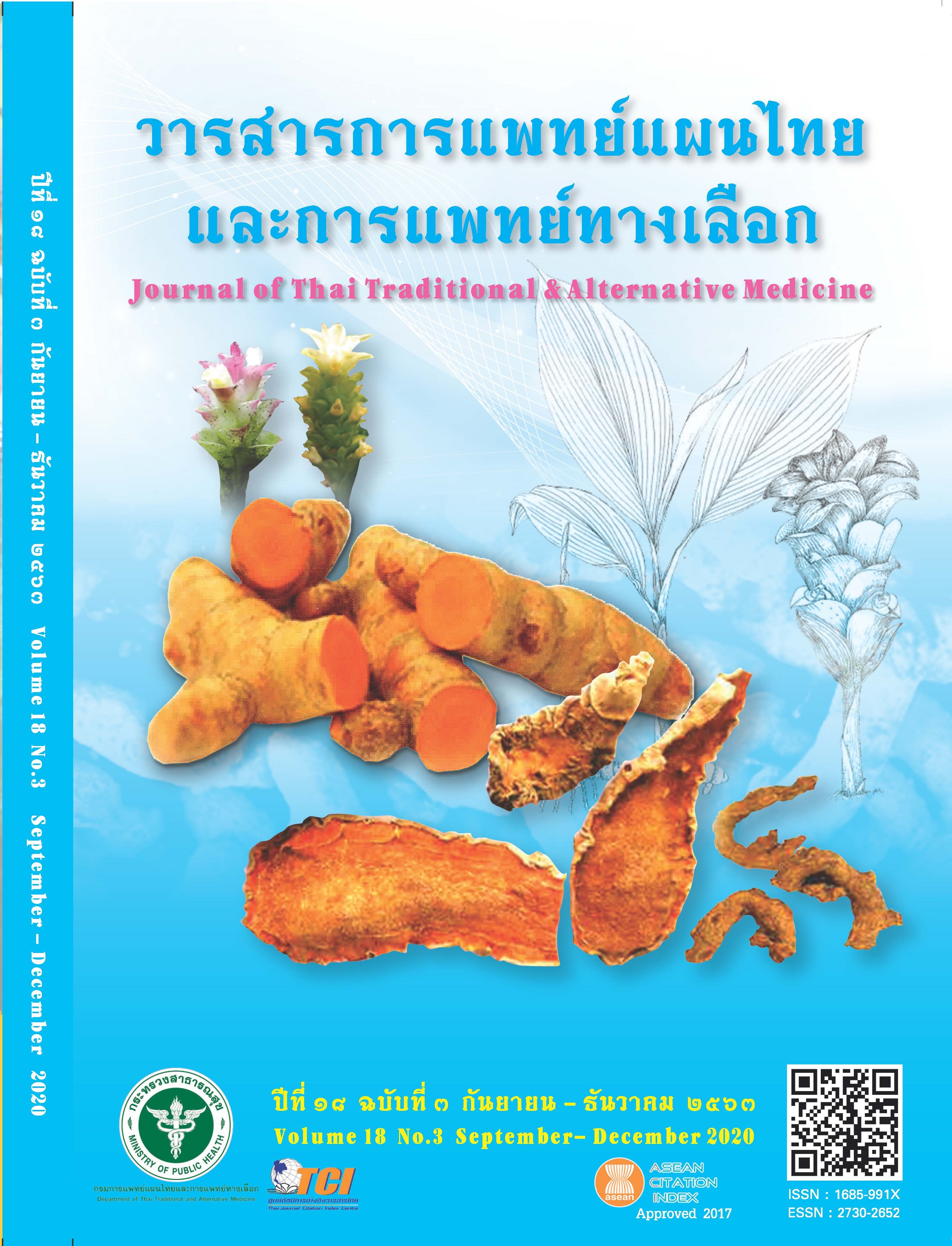Investigation of Mutagenic Activity of Helicteres isora L. Extract
Main Article Content
Abstract
Helicteres isora L. (porbid, in Thai) is one of the medicinal plants that has gained special attention from researchers and the public regarding its preventive and therapeutic properties for some diseases. More interestingly, the products of this herb have been launched and consumed widely by the people, but their toxicity and safety data are still limited. This study aimed to investigate the mutagenic activity of two forms of H. isora L.’s extract based on the OECD GLP test guideline 471. Four strains of Salmonella typhimurium (TA98, TA100, TA1535, TA1537) and Escherichia coli (WP2) were treated with five different concentrations of the extract (625, 1,250, 2,500, 5,000 and 10,000 µg/ml) without any metabolic activation enzyme. The results showed that the aqueous extract did not produce revertant colonies and showed a normal background lawn compared to the control in all extract concentrations and all bacterial strains. However, the 95% ethanol extract did not produce revertant colonies compared to the control in all concentrations and all strains, but the background lawn of TA100 exhibited the killing effect at 10,000 µg/ml; and also in TA1537, the killing effect was found at concentrations higher than 2,500 µg/ml. In conclusion, the compound did not cause mutagenicity. This preliminary study indicated that the aqueous compound may be safe for using as a product component at the treated doses. It was noted that the 95% ethanol compound should not be used at the extract concentration of more than 2,500 µg/ml. The data from this research can be used as safety data and for public warning of this herbal product.
Article Details
References
Office of the National Economic and Social Development Council. The twelfth national economic and social
development plan (2017-2021) [Internet]. 2016 December [cited 2020 May 26]; [224 pages]. Available from: http://plan.bru.ac.th/ (in Thai)
The plant list. Malvaceae [Internet]. 2013. [cited 2020 August 28]. Available from: http://www.theplantlist.org/
tpl1.1/search?q=helicteres+isora
BGO Plant Databases, The Botanical Garden Organization, Ministry of Natural Resources and Environment.
[Internet]. 2012 [cited 2020 October 29]; Available from: http://www.qsbg.org/database/botanic_book%20full%20option/search_detail.asp?botanic_id=2509.
Haynes RR, Landolt E, Phengklai C, Larsen K, Santisuk T. Flora of Thailand Vol. 7, part 3, Alismataceae,
Aponogetonaceae, Ctenolophonaceae, Cymodoceaceae,Hamamelidaceae, Hydrocharitaceae, Lemnaceae, Limnocharitaceae, Melastomataceae, Polygalaceae, Potamogetonaceae,
Sterculiaceae. Bangkok: The Forest Herbarium, Royal Forest Department; 2001. p. 568.
Tang Y, Gilbert MG, Dorr LJ. Helicteres. In Flora of China Vol. 12. 2007. p. 318.
Kumar N, Kumar SA. Plant profile, phytochemistry and pharmacology of Avartani (Helicteres isora Linn.):
a review. Asian Pac Journal of Tropical Biomedicine. 2014;4(Suppl1):22-6.
Boopathy RA, Elanchezhiyan C, Sethupathy S. Antihyperlipidemic activity of Helicteres isora fruit extract
on streptozotocin induced diabetic male wistar rats. European Review for Medical and Pharmacological Sciences.
;14:191-6.
Bhavsar SK, Föller M, Gu Sh, Vir S, Shah MB, Bhutani KK, Santani DD, Lang F. Involvement of the PI3K/AKT
pathway in the hypoglycemic effects of saponins from Helicteres isora. Journal of Ethnopharmacology.
;126:386–96.
Kumar G, Sharmila BG, Murugesan AG, Rajasekara PM. Preliminary Toxicity and Phytochemical Studies of
Aqueous Bark Extract of Helicteres isora L. International Journal of Pharmaceutics. 2007;3(1):96-100.
Dayal R, Singh A, Mishra KP. Potential of enhancing tumor toxicity by crude ethanolic extracts of fruits
of Helicteres isora (L.). Journal of Pharmacognosy and Phytochemistry. 2017;6(1):417-23.
Venkatesh S, Reddy BM, Reddy GD, Mullangi R, Lakshman M. Antihyperglycemic and hypolipidemic effects
of Helicteres Isora roots in Alloxan-Induced Diabetic Rats: a possible mechanism of action. Journal of Natural
Medicines. 2010;64(3):295-304.
Department of Medical Sciences, Ministry of Public Health. Thai Herbal Pharmacopoeia 2019. Volume II.
Bangkok: Appendices 4-15 loss on drying 7-16 acidinsoluble ash 7-7 total ash. 2019.
OECD Guideline for testing of chemicals. Bacterial reverse mutation test [Internet]. 2020 [cited 2020
October 29]; [1-12 pages]. Available from: https://www.oecd-ilibrary.org/environment/test-no-471-bacterialreverse-mutation-test_9789264071247-en.1-12.


